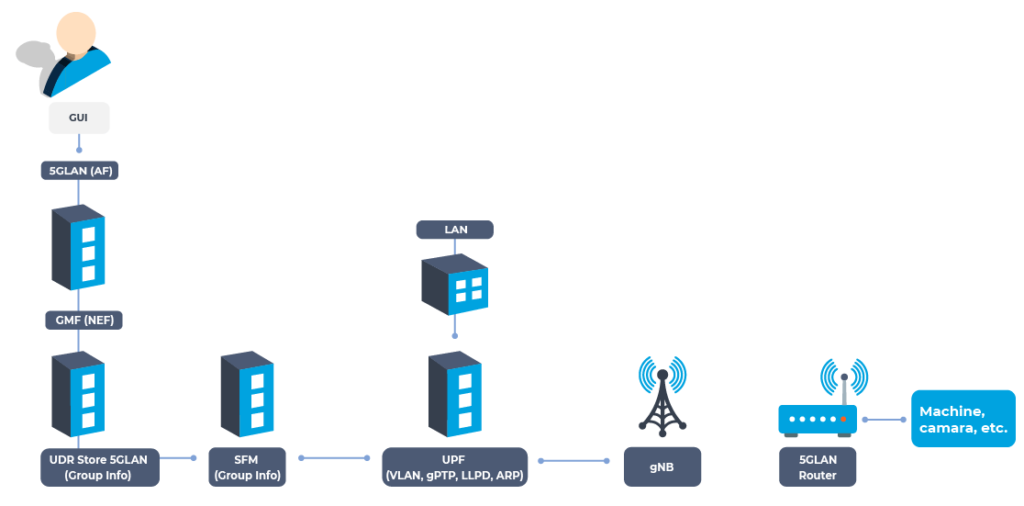5GLAN feature enables the integration of mobile networks
5GLAN feature enables the integration of mobile networks as a part of existing IT infrastructure. Connectivity based on 5GLAN reduces the use of Ethernet cables and provides similar connectivity to autonomous vehicles.
For traditional Ethernet communication, a device needs to find out the MAC address of its peer device. The device, according to the destination IP address XXX derived from the IP packet that needs to be delivered, would initiate an enquiry “who has the IP address XXX”, and this enquiry is broadcasted to all the devices belonging to the same LAN. The device who has this IP address will respond and provide its MAC address to the requesting device.
5G LAN support discovery mechanisms
For 5GLAN case, it is essential to allow a UE to obtain the identifiers of other UEs in the same private communication of 5G LAN-type service for application communication use. In LAN networks, devices make use of discovery mechanism (e.g Bonjour, UPNP) to discover other devices online to be used and their characteristics. This discovery mechanism makes use of the multicast capabilities of the network. Therefore, it is important that 5G LAN support discovery mechanisms.
The 5G network shall support the routing of non-IP packet (e.g. Ethernet packet) efficiently for private communication between UEs and Control Center (UE). On-demand establishment of a multicast communications within a subset of UEs that are members of the 5G PVN, e.g. equipment A creates a multicast on demand and B and C joins this multicast to receive A’s multicast messages.
The 5GLAN Group may be dynamically created by an operator or possibly requested by Application Function via service exposure. Identities, a Non-public network ID (NPN-ID) identifies a non-public network. The NPN-ID supports two assignment models.
Locally managed NPN-IDs are assumed to be chosen randomly at deployment time to avoid collisions (and may therefore not be unique in all scenarios). Universally managed NPN-ID are managed by a central entity are therefore assumed to be unique.
Identities, a Closed Access Group (CAG) ID uniquely identifies a closed access group (CAG) in a PLMN. PLMN ID consists of MCC 999 (assigned by ITU for private networks [14]) and an MNC defined by 3GPP to identify the cell as part of a non-public network. The configuration of the UE is performed from a logical Application Function (AF) that configures the UE via the PCF directly or indirectly via the NEF first and the PCF second.
Want to know Cumucore solution? Get your mobile private network software








Pingback: Cumucore has installed its 5G core successfully on RedHat OpenShift - Cumucore
Pingback: Why private networks? - Cumucore
Pingback: 5G Standalone for factories - Cumucore
Pingback: Cumucore deploys 5G SA private wireless network for Bosch Engineering in Germany - Cumucore
Pingback: 5,5G and 6G in 2023 - Cumucore
Pingback: Cumucore joins Avnu Alliance to enable interoperability with its 5G Time-Sensitive Networking (TSN) solution - Cumucore